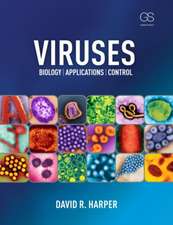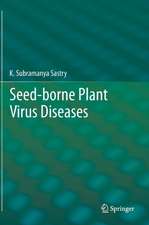Behaviour of Micro-organisms: Based on the Proceedings of the 10th International Congress of Microbiology held in Mexico City
Editat de A. Perez-Miraveteen Limba Engleză Paperback – 3 apr 2012
Preț: 717.00 lei
Preț vechi: 754.74 lei
-5% Nou
Puncte Express: 1076
Preț estimativ în valută:
137.19€ • 143.63$ • 113.52£
137.19€ • 143.63$ • 113.52£
Carte tipărită la comandă
Livrare economică 07-21 aprilie
Preluare comenzi: 021 569.72.76
Specificații
ISBN-13: 9781468419641
ISBN-10: 1468419641
Pagini: 320
Ilustrații: XVIII, 301 p.
Dimensiuni: 155 x 235 x 17 mm
Greutate: 0.45 kg
Ediția:Softcover reprint of the original 1st ed. 1973
Editura: Springer Us
Colecția Springer
Locul publicării:New York, NY, United States
ISBN-10: 1468419641
Pagini: 320
Ilustrații: XVIII, 301 p.
Dimensiuni: 155 x 235 x 17 mm
Greutate: 0.45 kg
Ediția:Softcover reprint of the original 1st ed. 1973
Editura: Springer Us
Colecția Springer
Locul publicării:New York, NY, United States
Public țintă
ResearchCuprins
Chemotaxis and Chemotropism.- Chemotaxis in Escherichia coli.- Chemotaxis in Ciliate Protozoa.- Chemotaxis of Animal Spermatozoa.- Chemotaxis and Aggregation in Slime Molds.- Pollen Tube Chemotropism.- Phototaxis.- Phototaxis and Photokinesis in Bacteria and Blue-Green Algae.- Phototaxis in Euglena 1: Physiological Basis of Photoreception and Tactic Orientation.- Phototaxis in Euglena 11: Biochemical Aspects.- Studies in Microorganismal Behavior by Computerized Television.- Role of the Cell Membrane in Behaviour of Paramecium.- Electrical Mechanisms Controlling Locomotion in the Ciliated Protozoa.- Role of Bound Calcium in the Control of Cilia.- Behavioral Mutants of Paramecium Aurelia.- Amoeboid Movement and Behaviour.- The Behavior of Amoebae.- Flagella and Cilia.- Biochemistry of Bacterial Flagella.- The Basal Body of Bacterial Flagella.- The Nature of the Flagellar Hook and the Likely Involvement of Surface Structures in the Formation of Bacterial Flagellum.- Genetics of Bacterial Flagella in Special Reference to Motility.- Structural Basis of Ciliary Activity.- Habituation and other Behaviour Modifications.- Habituation in the Protozoan Spirostomum and Problems of Learning.- Physiological Correlates of Habituation in Stentor coerelius.- Behavior Modification in Protozoa.- Biological Clocks.- The Role of the Clock in Controlling Phototactic Rhythms.- Rhythms in Dinoflagellates.- Circadian Rhythms in Neurospora.- Protein Synthesis and Temperature Compensation in Circadian Rhythmicity.





